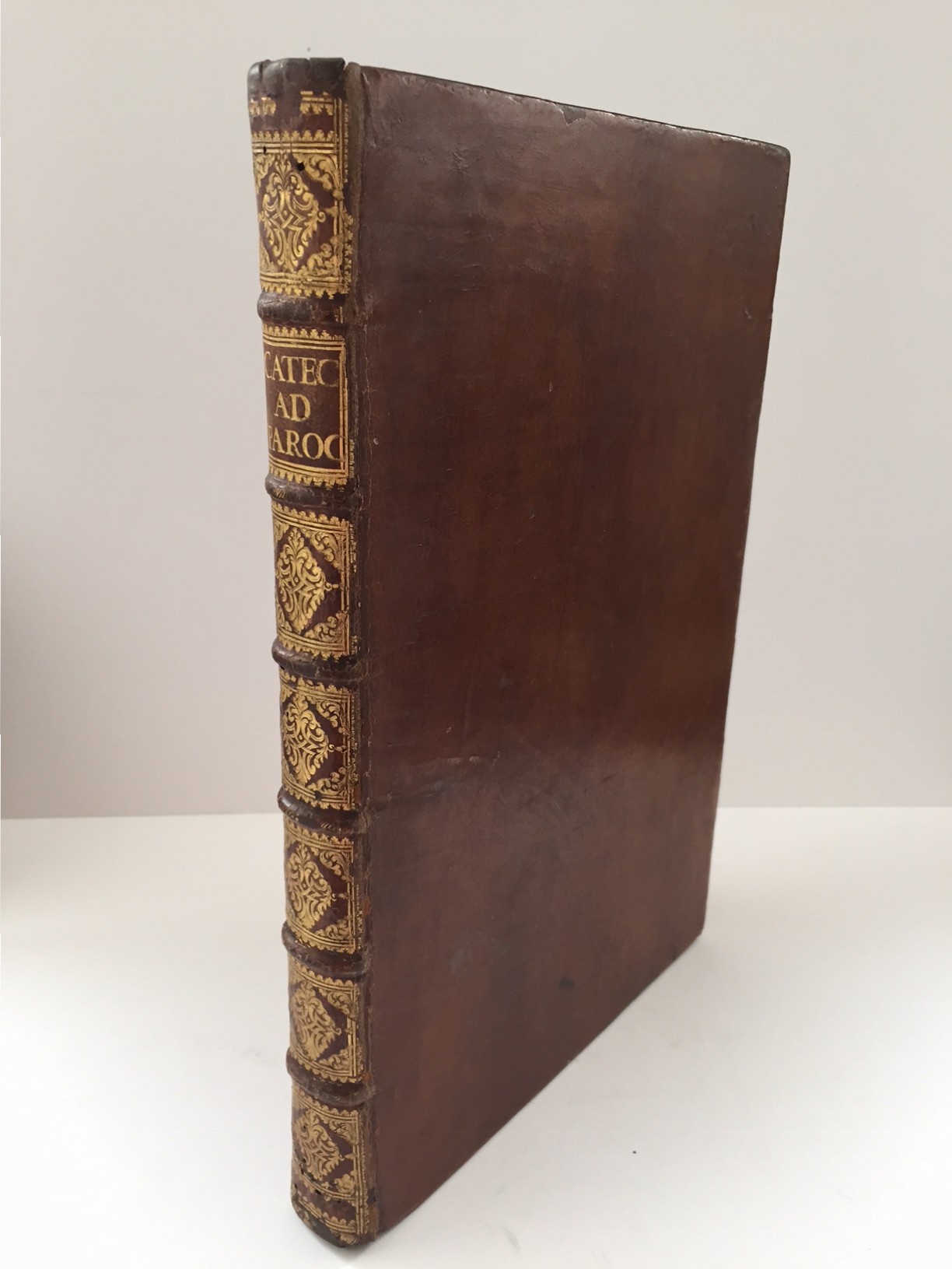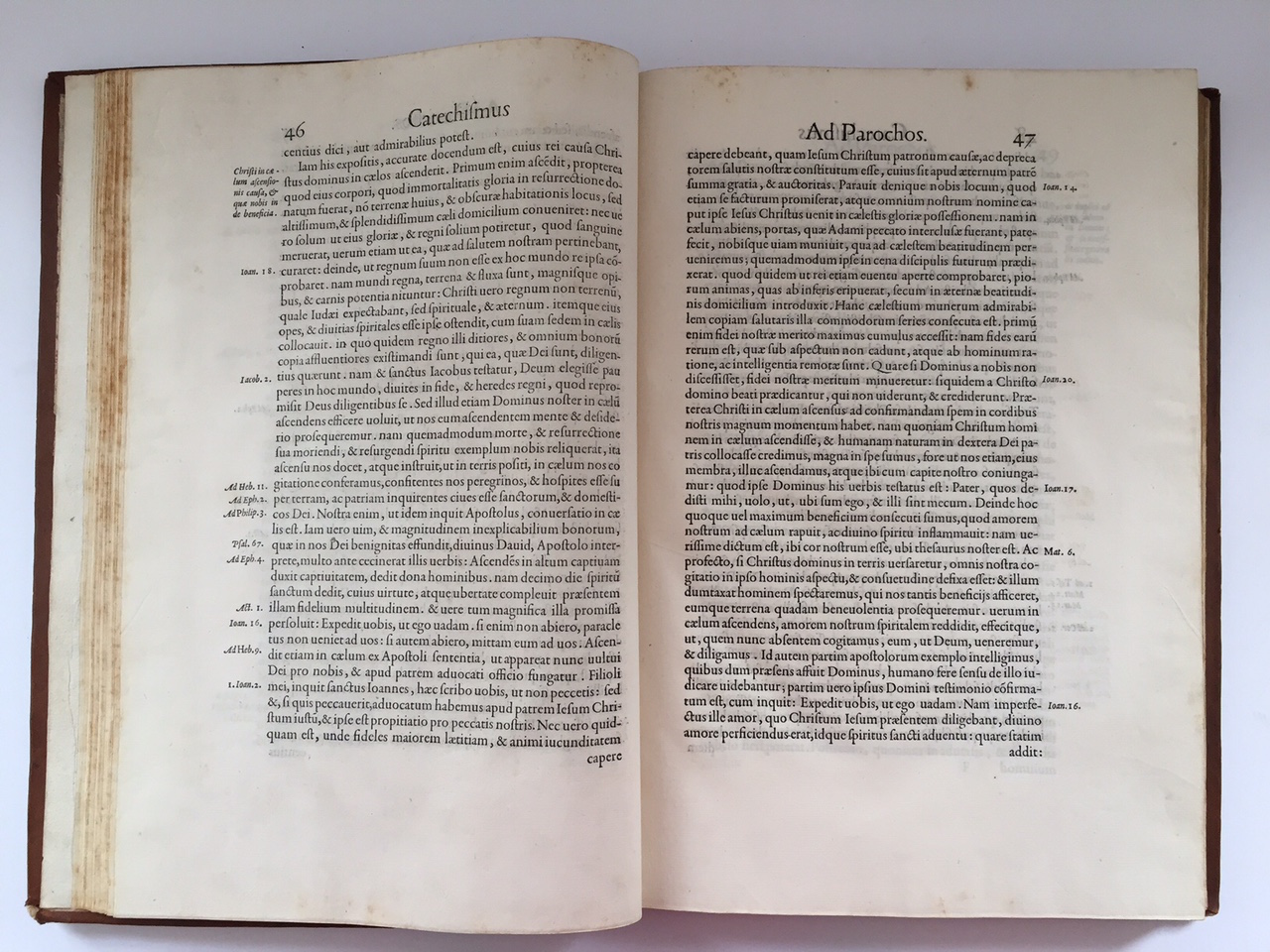ROMAN CATHOLIC CHURCH
Catechismus ad parochos
Rome, Paolo Manuzio, 1566£6,250.00
FIRST EDITION. Folio, pp. [4], 359, [13]; Roman letter, little italic; large printer’s device on title, one large white-on-black decorated initial; marginal foxing, a few leaves a bit browned. A good, wide-margined copy in calf c.1700, gilt title on spine, gilt floral decorations to spine and borders, all edges gilt; original pastedowns from charming papier dominoté with flowers and fruits, partially hand-coloured; slightly rubbed corner, tail, head and edge gilt; on title, partially erased and altered contemporary ms ex libris ‘Collegii Romani Societatis Iesu’ with class mark, trimmed early seventeenth-century inscription at head, early ms ‘D.A.S’ to foot; occasional numbering, notabilia and corrections to text in seventeenth-century hand.
First edition of the official Catechism of the Catholic Church following the decrees of the Council of Trent. It is an instructive guide to either learn or teach the foundations of Catholicism, based on the Apostles’ Creed, the Decalogue and the Lord’s Prayer. It is not, however, a mere set of questions and responses but a lengthy treatise on most aspects of the Catholic faith for the benefit of the clergy rather than the laity; it is addressed to parish priests, whose religious education was often faulty and poor.
This editio princeps is an important specimen of the Aldine press’s output, since it was published by Paolo Manuzio during his stay in Rome as the first official papal printer in history. Pius IV established this pioneering papal press in 1561, but its onerous expenses were soon laid on the Roman Commune. This is why the device on title has the symbols of the city of Rome, the coat of arms of the Commune with the famous motto SPQR and, at foot, the small Aldine dolphin twisted on an anchor with Paolo Manuzio’s initials at sides. Renouard, Brunet and Graesse noticed that two different, equally valuable issues were carried out, but their order of appearance has not been established.
This is a copy from the Jesuit College of Rome. Founded in 1551 by St Ignatius of Loyola, such an epoch-making institution contributed significantly to forming the Italian and European Catholic ruling class for centuries. Here, the Jesuits developed their famous forward-looking study plan (Ratio studiorum) centred on Latin and Greek, philosophy, theology and maths; several similar colleges were successfully established by that order throughout the continent. Its massive library, comprising some very important historical bequests, was incorporated into the Italian National Library in Rome following the end of Papal rule over the city in 1870.
BM STC It., 679; Adams, C 1056; Brunet, I, 1657; Graesse, II, 77; Renouard, 200:5; Bellinger, 1.In stock






